Two Saints
2017.01.05.
 Categorized: Front Page
Categorized: Front Page
Today it is the 6th of December. On this day two saints died in Asia: Bishop Nicholas (in Hungary and the Czech Republic he is also called Santa Claus) about 1673 years ago and a Buddhist saint, Bhimrao Ramji Ambedkar 60 years ago.
Saint Nicholas was born into the highest layer of society, while Ambedkar was born into the lowest. Europe knows a lot about Nicholas, but very little about Ambedkar. Only this spring, on the 125th anniversary of his birth was his first statue inaugurated in Europe. It was installed in Sajokaza, where there is a school named after him and run by his followers. His followers found and run their schools even amidst very difficult circumstances, so that more and more people can follow Dr. Ambedkar in the path of those educated and spellbinding intellectuals from the lowest rungs of society, who proclaim the motto ”Dignity for Everyone” in their fight for human rights.
Dr. Ambedkar was born in the state of Madhya Pradesh in India. His mother gave birth to him as the 15th child in a dalit family under the Hindu caste system. For the untouchable dalits there were only segregated schools available and very limited attention from teachers. The only reason Dr. Ambedkar could get into a state school reserved for students from the higher castes, was that his father served in the British army’s Indian legion as a lieutenant, and for the English being a dalit was not a reason to exclude him. The dalit children were not allowed to touch the school desks, they had to sit on hempsacks. They were not allowed to touch the waterjugs either, they could only drink, if the teaching assistant cared to pour some water into their mouth.
Ambedkar was the only dalit in the whole school in Bombay. He finished his high school studies as a married man, after he was married to a 9 year old girl at the age of 15. The whole community celebrated, when he succeeded in being the first person from the community to be admitted to a college. After that it was with a scholarship from a maharaja that he studied at the Columbia University and at the London School of Economics.
In the 1920’s and 30’s Dr. Ambedkar organised and led huge non-violent protests against segregation and for the rights of the outcasts, so that they could use the water system in the cities and they would be permitted to enter the temples and schools visited by others. He publicly burnt the Hindu holy writing that was the basis for turning dalits into outcasts.
The English and the leaders of the independence movement talked about the future Indian constitution in the 30’s. Ambedkar sat at the roundtable in London, while Gandhi was in prison. In London Ambedkar’s ideas were accepted about affirmative action regarding the outcast and segregated social groups and their own electoral representation system. Gandhi started a hunger strike in prison as he didn’t agree with Ambedkar on everything. Ambedkar visited him in prison and India’s independent constitution was built on their agreement, in the making of which the leading role was played by Ambedkar, who became the first Minister of Law and Justice of independent India in Nehru’s government.
Dr Ambedkar identified religions with their social roles. He used tough words to condemn both of the most prominent religions of his country, Hinduism (the religion he was born into) and Islam due to caste system, slavery, child marriage and the ill treatment of women. He did not refrain from condemning Gandhi either.
Dr. Ambedkar’s reforms in family law and some other areas were mainly blocked due to opposition from the priests. He had been studying the different branches of the different religions to find the one that is acceptable by ”common sense”, modern science, the principles of freedom and equality and does not glorify poverty, does not proclaim that it is good to be poor, when it is not so.
Dr. Ambedkar in the company of half a million of his followers converted to Buddhism in a monumental ceremony and wrote his main work entitled The Buddha and His Dhamma. This is the „dalit Bible”, which was only published after the death of Ambedkar, as the author died two months after the huge conversion ceremony.
Dr Ambedkar has a big following. His birthday is a national holiday and many institutions were named after him. His opposition is also quite significant, which is only natural, since he has earned the dislike of not only those, who are enemies of freedom, equal rights and equal dignity, but also of those, who are pledged believers of Hinduism and Islam.
In Sajokaza at the Dr. Ambedkar school teachers and students remembered the public figure on the 6th December, after whom the school was named:
The Jai Bhim Community, a group of Dr. Ambedkar’s followers were registered as a church in 2007 and were cast out from the list of churches with the other churches identifying with the outcasts in 2011.
Written by: Sandor Revesz
Source: http://romasajtokozpont.hu/revesz-sandor-ket-szent/
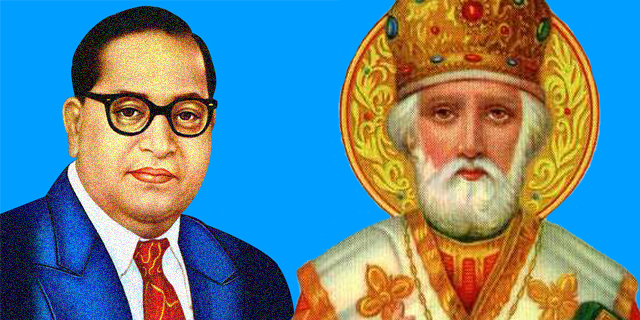
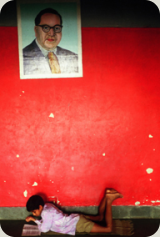
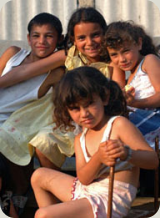
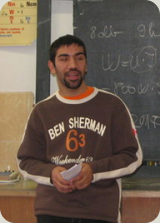
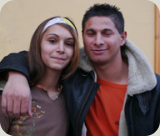
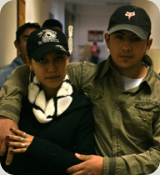
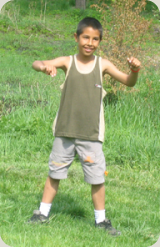
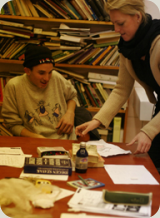















Most Active Commentors